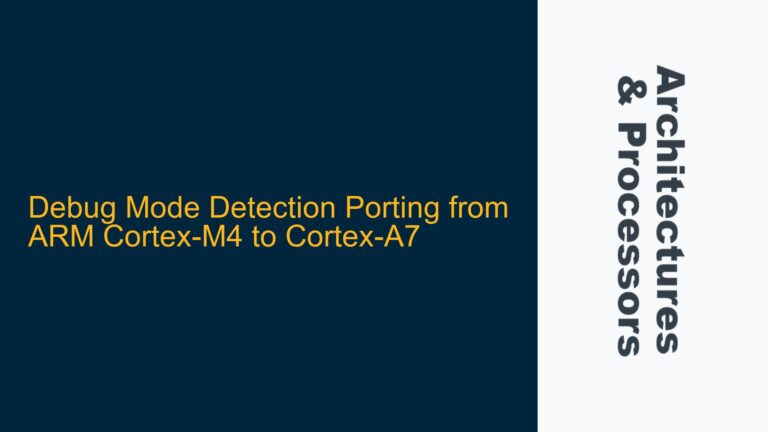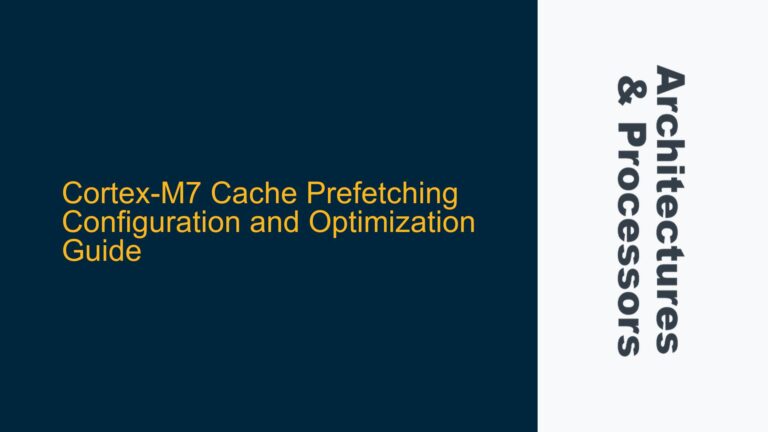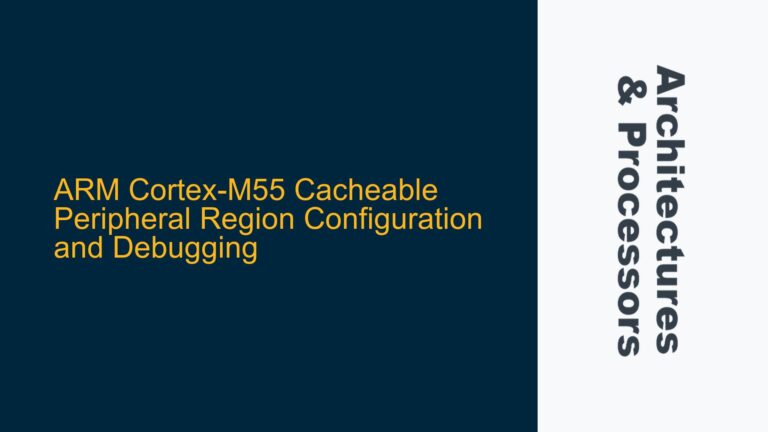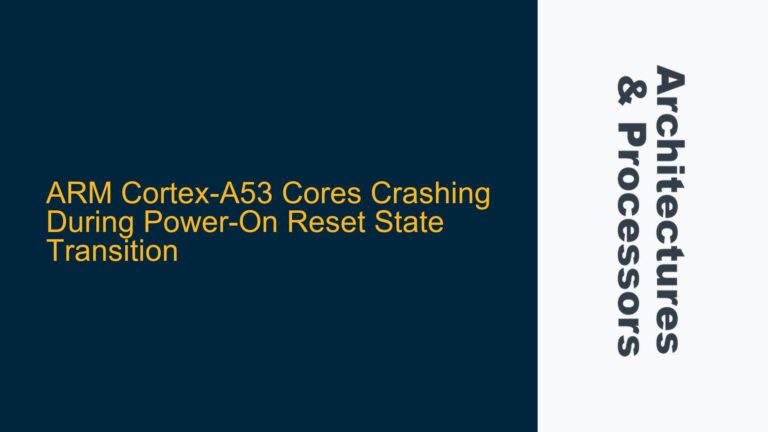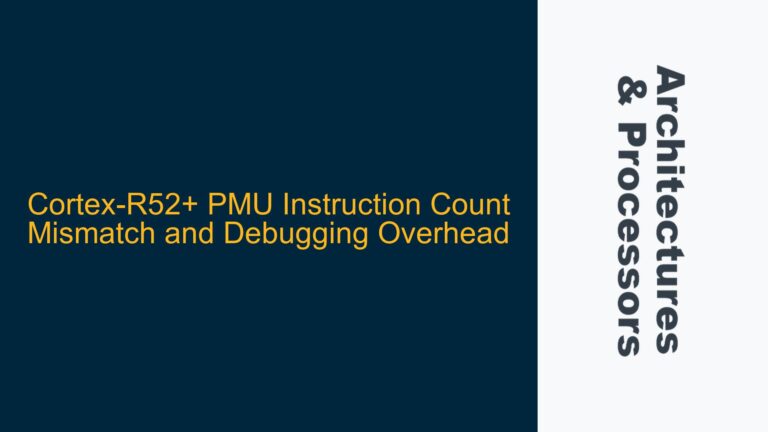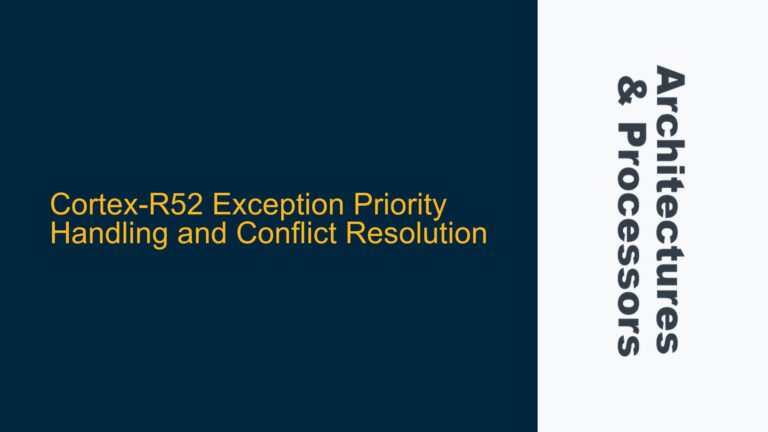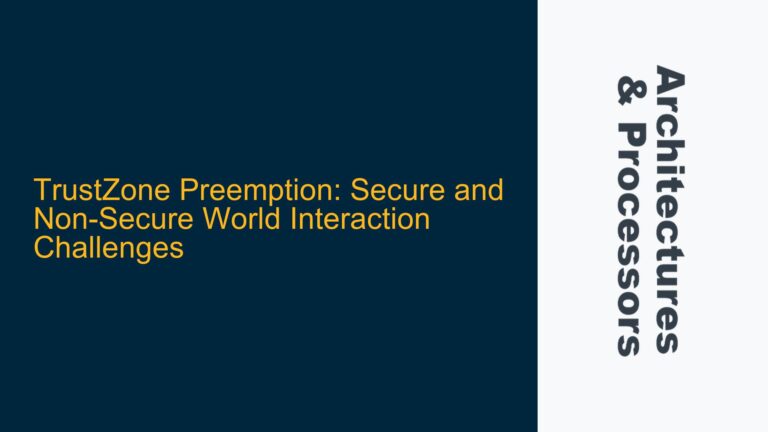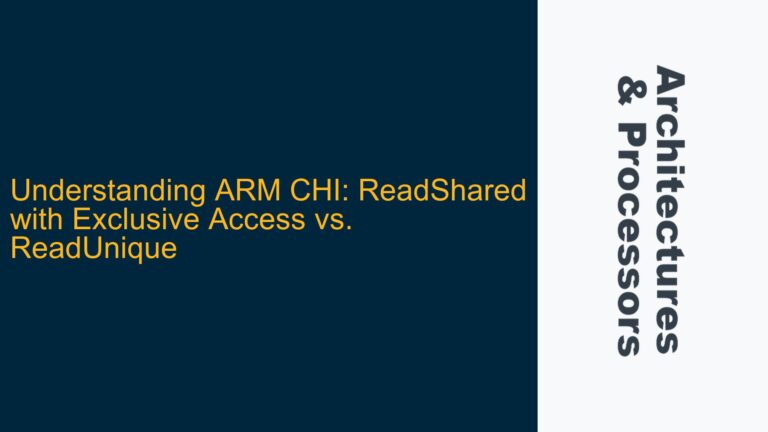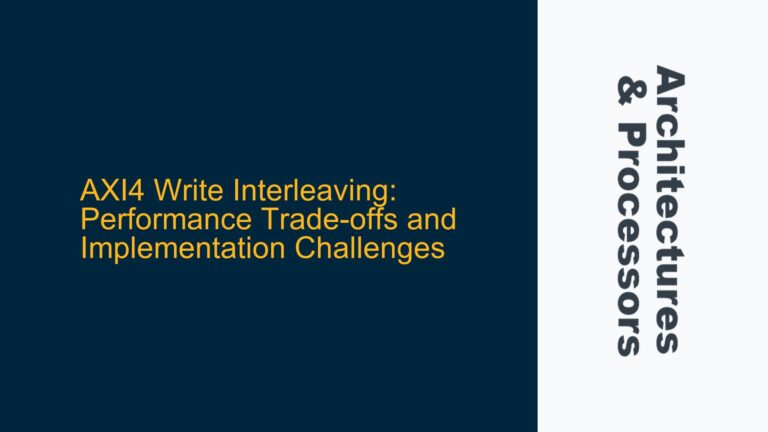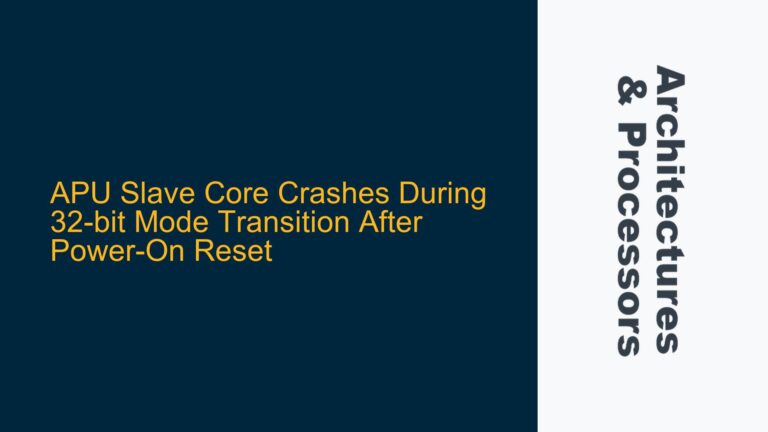Debug Mode Detection Porting from ARM Cortex-M4 to Cortex-A7
Debug Mode Detection Differences Between Cortex-M4 and Cortex-A7 The process of detecting whether a microcontroller is in debug mode varies significantly between ARM Cortex-M4 and Cortex-A7 architectures due to differences in their debug architectures and register implementations. On the Cortex-M4, the debug mode status can be checked using the CoreDebug->DHCSR register, specifically by examining bit…
